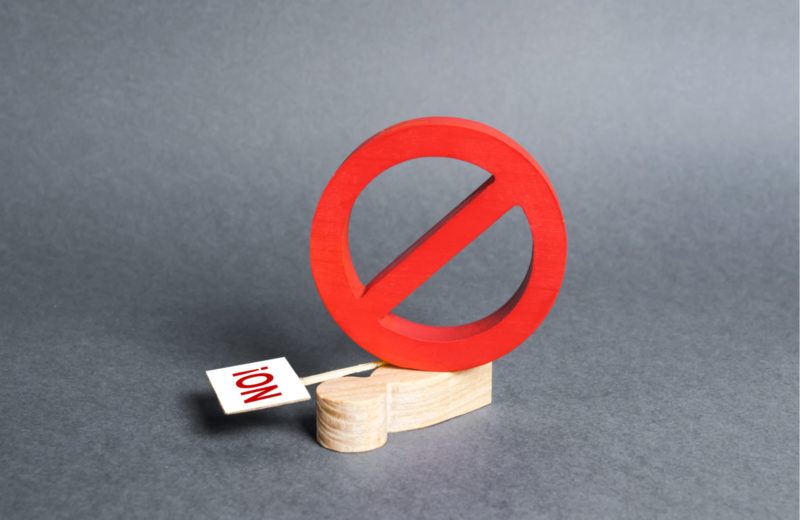Anatomy of the Great Suppression

In America’s Great Depression, Murray Rothbard buttresses his case for his business cycle theory by carefully noting when the theory does not apply. For example, he writes, “A sharp increase in taxation may depress industry and the urge to invest and thereby precipitate a crisis.” Plunges in business activity may also be caused by “famine, plague, seizure of bullion by Charles I, losses in war.” Examples like these, Rothbard observes,“are always identifiable and create no mysteries about the underlying causes.”
Ditto the current collapse, which is also not mysterious and doesn’t need business-cycle theory to explain it. I’ve dubbed it the Great Suppression, which I define as a severe contraction in business activity caused by a crackdown, via government’s iron fist, on a huge share of capitalist acts between consenting adults. Green New Dealers have been threatening a Great Suppression with the aim of saving humanity from extinction due to a climb in global temperature.
This Great Suppression is aimed at “flattening the curve” in the hope of rationing scarce medical supplies and thereby allowing a better and calmer response to the coronavirus. A lower death-rate is the hoped-for result.
On the other side of the ledger, however, the Great Suppression is an awful calamity: the vaulting rate of business bankruptcies and joblessness, bringing their own toll in death and morbidity; trillions in added U.S. Treasury debt, and the tightened grip of government over our lives. That grip will be loosened once the crisis passes, but it will likely be tighter post-crisis versus pre-crisis.
But the Great Suppression has a potential advantage over conventional, theoretically-explained recessions: It could turn out to be nasty and brutish, but relatively short.
The very fact that it doesn’t require the intricacies of business cycle theory to explain it means we needn’t be concerned that policymakers will never grasp the subtleties of malinvestment that must be shed to enable the economy to reorient towards sound investment.
Instead, we’re dealing mainly with the way they view all economic downturns—a case of swooning but sound investment that needs to be revived. That leaves us all on the same page about what must happen to spark a recovery: The government must withdraw its iron fist and allow business-as-usual to resume.
Drawing on an analysis commissioned from Moody’s Analytics, a story in The Wall Street Journal offers a useful survey of the carnage (“State Shutdowns Have Taken at Least a Quarter of U.S Economy Offline,” April 5), while incidentally reminding us of the confusion that would arise if this were a conventional downturn requiring business-cycle theory as explanation.
Referring to the previous recession, of 2008-09, the Journal observes: “That recession began with what is known as a demand-side shock—a loss of household wealth and income that led to decreased spending, which eventually harmed the supply side, or businesses.”
An alarming statement, given its appearance in our most sophisticated financial daily. By fourth quarter ‘07, just before the recession began, the part of gross domestic product called private residential investment had plunged by 33.3% in real—that is, inflation-adjusted terms, from its peak in third quarter ‘05. That’s surely a supply-, not a demand-side shock. On the demand side, real consumer spending rose steadily from quarter to quarter, and was up 5.5% from third quarter ‘05 through fourth quarter ‘07. So the 2008-09 recession began with the housing bubble burst: a result of government-induced malinvestment in housing that had begun years before.
But when it comes to this downturn, the Journal is in no danger of missing the point. “Forty-one states,” we read, “have ordered at least some businesses to close to reduce the spread of the coronavirus, according to Moody’s. Restaurants, universities, gyms, movie theaters, public parks, boutiques and millions of other ‘nonessential’ businesses have shut off the lights as a result.” The solution, then, is to allow these non-essentials to turn the lights back on.
According to the story, Moody’s estimates that “U.S. daily output has fallen roughly 29%, compared with the first week of March, just before the spate of closures.” That should be more than enough to tank the economy in the Jan-March quarter.
Note also that the Commerce Department’s Bureau of Economic Analysis, keeper of the National Income and Product Accounts, reports quarterly changes in real GDP on an annualized basis, a practice the media often fails to mention. So if that 29% persists through the April-June quarter, the economy will be officially reported as having collapsed by more than 70% from the first quarter, an annualized figure likely to spook markets.
Moody’s Analytics Chief Economist Mark Zandi doesn’t think the plunge will be nearly that great. He believes that many non-essential businesses will be allowed to reopen before the current quarter ends, and that the third quarter will score positive annualized growth compared to the second quarter.
That means the economy will be in a recovery phase by the third quarter, a forecast I view as plausible. If that happens, the downturn will have persisted only through the first two quarters of this year.
It won’t be a V-shaped recovery; third quarter GDP growth will fall far short of reversing the second quarter’s decline. For one thing, the Great Suppression will have permanently destroyed many marginal businesses. Another impediment: the $600 weekly supplement to unemployment insurance checks, due to last for four months, which will make it difficult for many businesses to lure workers. As a result, their output won’t match pre-Suppression levels.
The unemployment rate will surely exceed the post-World War II peak of 10.8% set in late-1982, and will probably remain at double digits through the third quarter. But by the fourth quarter, the jobless rate will likely fall to the high single digits. But it may not be until the first quarter of next year that real GDP matches the level of fourth quarter 2019, technically ending the recovery phase, and ushering in another expansion, probably at the sluggish annual rate of 2%.
One clear risk to my outlook: Government could maintain the lockdown for the rest of the year. But quite apart from that, plenty of forecasters with an Austrian perspective would regard this scenario as rosy in the extreme. In their view, the economy was already spoiling for a fall according to the Business-Cyle playbook, and the Great Suppression only hastens the collapse, which is likely to persist for quite some time.
They could prove right. Briefly, here’s why I can’t share their view.
Rounding up the usual suspects, there’s been no solid evidence of a stock market bubble comparable to 1999-2000. During the recent expansion, the conventional price-to-operating earnings ratio on the S&P 500 has never been higher than 21.5 times earnings—frothy, but not nearly as high as 27-29 in 1999-2000.
In August 2000, the price-to-dividend ratio on the S&P 500 was 90.9 times dividends; in the recent expansion, this ratio has never been higher than 56.8. Similarly, house prices have been elevated, but they’ve still been well below the bubble-level of 2005-06 when adjusted for other measures of price inflation.
Ridiculously low interest rates have definitely brought a bond bubble of colossal proportions. But it’s been concentrated in the government sector, where different rules apply. U.S. Treasury debt held by the public soared to $17.7 trillion as of March, and trillions more are about to be tacked on. But there’s a good chance that the Treasury-debt bubble won’t burst.
The interest rate on this debt as of March was 2.3%. Over the past 60 years, the average interest rate on U.S. Treasury debt has been 5.8%. If bond vigilantes (sellers of bonds) propel the interest rate to 4.05%, half-way toward its historical average, there would be a plunge in the market value of those bonds, thus pricking the bond bubble.
But I doubt that will happen over the next 12 months, or even over the next few years. For one thing, foreign investors still like Treasuries. If anything, the interest on the debt could fall from 2.3%, testing its Nov. 2016 low of 2.2%.
As mentioned, however, the bears could prove right. This is the U.S. economy’s first ever Great Suppression, lending great and unprecedented risk to anyone’s forecast.










